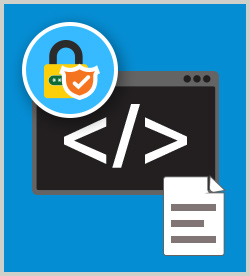Collections Cybersecurity Collection Defensive Programming Secure Programming
Explore the basic concepts of the secure programming methodology, including identifying potential security risks. This course introduces you to defensive and secure programming, and the importance of testing your code. You will begin by learning how to identify potential risk sources from user input, external data sources, weak access security, inadequate input validation, poor code, and unhandled exceptions. Next, see how to initiate defensive programming in all stages of the software life cycle. From there you will study the purpose of software tests, test guidelines, the software testing process, and low-level design inspection steps. Conclude by learning the levels, steps, guidelines, and benefits of unit testing.
| Objectives |
|---|
Secure Programming Fundamentals
Inspections and Testing
Practice: Secure Programming Basics
|


